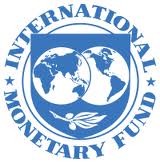International Monetary Fund Managing Director, Kristalina Georgieva said at the conclusion of the First Meeting of the G20 Finance Ministers and Central Bank Governors in Cape Town South Africa that there is low global growth prospect with high debt. In her address at the meeting she said “we project global growth at 3.3 per cent this year and next—steady but well below historic average and in the context of high public debt levels. Underlying this, we see divergences widening across economies, with growth in the U.S. stronger and a somewhat more gradual pick up in the EU than previously expected. In emerging markets and developing economies, growth in 2025 broadly matches last year’s performance. The global disinflation process continues. With the gradual cooling of labor markets and energy prices expected to decline further, headline inflation is projected to continue its trajectory toward central bank targets. At the same time, uncertainty with regard to economic policies is high. Governments around the world are shifting policy priorities.
There are significant policy changes in the United States, in areas such as trade policy, taxation, public spending, immigration, and deregulation, with implications for the U.S. economy and the rest of the world. Governments in other countries are also adjusting their policies. The combined impacts of possible policy changes are complex and still difficult to assess but will come into clearer view in the months ahead.
Risks are also diverging. In the short-term, there is some upside potential in the U.S., where positive sentiment could boost activity. But, overall risks are to the downside for most other economies, including the risk of policy-induced disruptions to the disinflation process or capital outflows from emerging market economies.
With the outlook for growth stuck at its lowest in decades, the central task is to craft policies that provide a strong foundation for higher and more durable growth. Macroeconomic and financial stability must be preserved to enable growth. To that end, countries must manage multiple pressures: contain short-term risks, rebuild buffers, lift medium-term growth prospects. For central banks, the focus remains fully restoring price stability, and to do so while supporting activity and employment.
On the fiscal side, most countries need to put public debt on sustainable path and rebuild fiscal buffers. While mobilizing more domestic revenues is crucial in many countries, it is equally important to promote more efficient public spending. The two go hand-in-hand to ensure that countries have the fiscal space to meet future shocks and provide the basis for higher future growth. Critically, it is important that countries embrace ambitious reforms to lift productivity and enhance growth prospects. The specific priorities will vary from country to country, but in general this calls for a pivot toward supply side policies: cutting red tape, increasing competition and encouraging entrepreneurship, strengthening education systems, smart regulation that can encourage risk-taking and rapid but safe advances productivity-enhancing technology, such as AI.
While domestic reforms are essential, many countries cannot go it alone. Stepped up external support is vital to help countries implement reforms, through capacity development and concessional external support, and actions to crowd-in more private inflows. There is also an urgent need to address debt challenges. A few countries may need to restructure their debt, while many more face high interest payments and refinancing needs that cripple their ability to invest in their future. A key step is to improve the predictability and timeliness of restructuring processes, building on the significant progress already achieved, including under the Common Framework. We also need to help countries with sustainable debt but faced with elevated interest payment and refinancing needs that crowd out their capacity to invest in education, health or infrastructure.
The IMF has a role to play. Through policy advice, capacity development, and lending where relevant, we help countries maintain or restore macroeconomic stability and implement sound policies needed for durable growth. We will continue to play a leading role on debt through our debt sustainability analyses and our support for international efforts to address debt challenges, including the Global Sovereign Debt Roundtable.
We remain committed to helping our member countries achieve greater prosperity and stability.”

